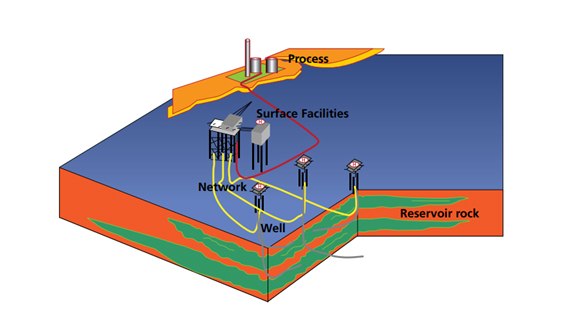Software gives students a head start for oil and gas industry careers
Posted by Andrew Careaga

Petroleum Experts pioneered the concept of Integrated Production Modelling (IPM), and it involves the elimination of artificial boundaries between engineering disciplines in modelling.
Access to engineering software worth more than $2.4 million from the engineering firm Petroleum Experts (known as Petex) will allow students at Missouri S&T to use the latest petroleum engineering software tools in their coursework.
Headquartered in Edinburgh in the United Kingdom, Petex has developed a suite of engineering software designed to improve the efficiency of oil and gas fields.
Petex has granted a license to Missouri S&T to use the petroleum engineering company’s Integrated Production Modeling (IPM) suite. The software has a commercial value of $2,424,414.
“Our IPM suite is the standard across the worldwide oil and gas industry and are currently used by more than 350 oil and gas companies,” says Dr. Hamid Guedroudj, Petex’s technical director. “By incorporating these tools in the curriculum, Missouri S&T will make sure their petroleum engineering students have access to the latest and most widely used software in the industry.”
“We’re grateful for Petex’s continued support of our petroleum engineering program,” says Dr. Shari Dunn-Norman, associate professor of petroleum engineering at Missouri S&T. “This license will ensure that our students have access to the latest and most sophisticated software available for the study of production engineering, reservoir engineering and the geosciences. The software will also be used by our graduate students for research.”
The Petex software allows for the modeling of full oil and gas production systems by capturing the physics, geology, engineering and fluid thermodynamics of the system from reservoir to oil and gas wells to the surface pipeline system and process. Once built, these models are used to optimize production for existing oil and gas fields and to assist with the system design of new fields.
Dunn-Norman adds that the license will help students gain the skills necessary for their future.
“This is the leading software in nodal analysis and production optimization from wellbore to surface pipelines, and it is vital that our students are experienced in using it,” says Dunn-Norman.
The Petex software will be used by approximately 150 petroleum engineering students at Missouri S&T, as well as geology and geophysics students, says Dunn-Norman.
S&T students will have access to the full Integrated Production Modeling suite, which consists of the following:
- PVTP, which predicts the effect of process conditions on the composition of hydrocarbon mixtures and fluid characterization
- MBAL, an analytical reservoir tool commonly used for modeling the fluid dynamic reservoir effects and material balance.
- REVEAL, which is designed to study specialized reservoir effects and assess their impact on the injection, production and enhanced oil recovery from the reservoir, capturing the thermal, rock mechanics and chemistry.
- PROSPER, a design and optimization program for modeling most types of oil and gas well configurations.
- GAP, a multiphase oil and gas optimizer that models the surface gathering pipeline network of field production systems. GAP integrates dynamically the reservoir model (MBAL) and well models (PROSPER).
- RESOLVE, a field engineering development tool that manages and control the IPM suite, Reservoir Simulators, Process Simulators to dynamically model, optimize and provide production forecasts of field operating scenarios. RESOLVE enables coupling of most major industry reservoir, process and economics simulation model to better evaluate and operate oil and gas fields.
“We’re very thankful to Petex for their support of Missouri S&T’s petroleum engineering program,” says Dr. David Borrok, Gulf Oil Professor and chair of geosciences and geological and petroleum engineering at Missouri S&T. “This software will help equip our students for their future careers because it’s is so widely used in the oil and gas industry.”
Leave a Reply